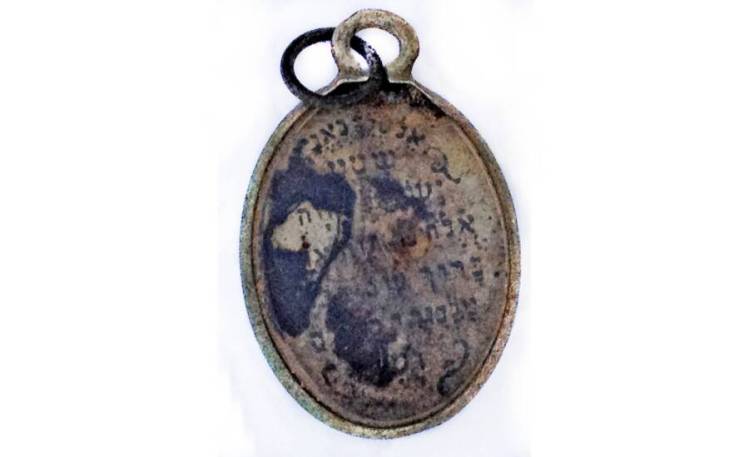Senior Nazi government leaders met in Berlin in 1942 to address the “Jewish question.” The Wannsee Conference ended with a “Final Solution” to slaughter over two million Jews across Poland and construct extermination camps like Sobibor, where three tragic relics were just discovered.
The Israel Antiquities Authority (IAA) revealed the discovery of three amulets with the Hebrew prayer Shema Yisrael (“Hear O Israel”) on the front on Holocaust Remembrance Day. While two of the amulets portray Moses carrying the Ten Commandments on his back, the Moses picture on the third amulet had faded with time.

The IAA’s director, Eli Eskozido, remarked, “The personal and human nature of the discovery of these pendants is unsettling.” “They represent a thread of prayer and faith that runs through generations of Jews — a thick, thousands-year-old thread of prayer and faith.”
Excavations at the ancient death camp have been ongoing for ten years, according to Haaretz. Experts led by IAA’s Yoram Haimi, Poland’s Wojciech Mazurek, and Holland’s Ivar Schute had already discovered priceless antiquities such as victim’s identification cards, but today’s attention is on the three pendants.
“Little is known about the terrible stories behind the pendants,” Haimi said.
One of the pendants, along with dozens of other items of jewelry and hairpins, was discovered on the floor of a room where female captives stripped before being forced into the Sobibor gas chamber by archaeologists. A third pendant was discovered beside a mass grave, while another was discovered at a similar undressing station at Camp II.
“A form of custom or trend with pendants inscribed with ‘Shema Yisrael’ on one side and an image of Moses and the tablets of the Law on the other side has been possible to detect among the Jewish communities of Eastern Europe,” Haimi stated.
“However, were they distributed in synagogues by local Jewish groups, or were they made to order?” The pendants are still being researched, and we’d want to hear from you if you have any information on them.”
One of the pendants was discovered in Lviv, Ukraine, while the other two were discovered in Poland and Czechoslovakia.

While Adolf Hitler and his second-in-command, Heinrich Himmler, had frequently raised the “Jewish question,” the Wannsee Conference on January 20, 1942, presented a final response. The conference outside Berlin, convened by senior Nazi official Reinhard Heydrich, focused on expediting Jewish deportation.
By October 1941, 537,000 Jews had been deported from Nazi Germany, and senior officials met to decide what would happen to the rest. Their plan would start with Poland’s 2.2 million Jews and would necessitate the construction of new facilities.
The Nazis used Operation Reinhard to construct three execution camps in Poland: Treblinka, Belzec, and Sobibor. But Sobibor was only around for a brief time.
A dozen inmates started an armed revolt that grew to over 300 inmates in October 1943. A total of half of the captives at Sobibor were able to flee. The Nazis burned the camp to the ground to erase any evidence of their crimes.
Excavations at the site did not begin in earnest until the 1990s. Archaeologists have made numerous startling findings in recent years, including women’s jewelry, prisoner identity bands, and even a pendant with ties to Anne Frank.
The location now houses a local museum that displays the site’s antiquities as well as the inherited misery of numerous families.























